White primer for wallpaper: selection criteria

The quality of finishing depends not only on adherence to the technology of work, but also on the right materials. How to choose a white primer for wallpaper, this article will tell you.
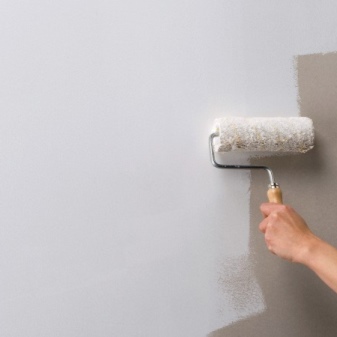
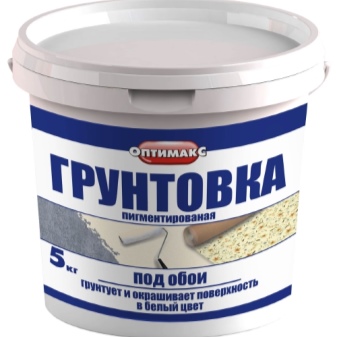
Views
Today white primer is available on the market in two versions. The composition is available in dry and diluted forms.
- Dry composition is a powder or granules. Before gluing the wallpaper, it must be diluted with water in accordance with the instructions (the packaging indicates the consumption of the product per square meter).
- Diluted the option is sold in the form of an emulsion already prepared for use.
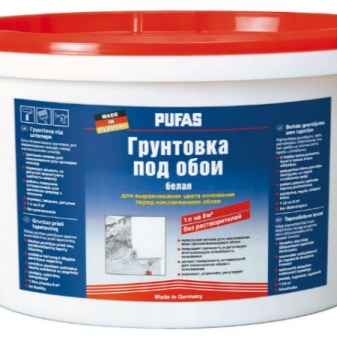
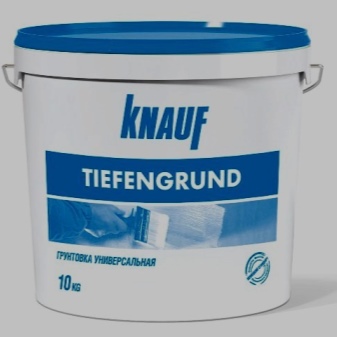
The diluted material also differs in consistency:
- The advantage of a liquid mixture is that it penetrates deeper into the structure, strengthening the base. Its costs are higher in comparison with dense primer. It should be noted that due to the transparency of the composition, it will be difficult for beginners to achieve uniform application.
- The thick mixture lays down on top of the base, performing a covering function. It does not penetrate deeply, but forms a protective film. This property allows you to hide small defects and microcracks, improving the leveling and adhesion ability. In their formula, thick bases contain a coloring white pigment, thanks to which they hide dark spots.
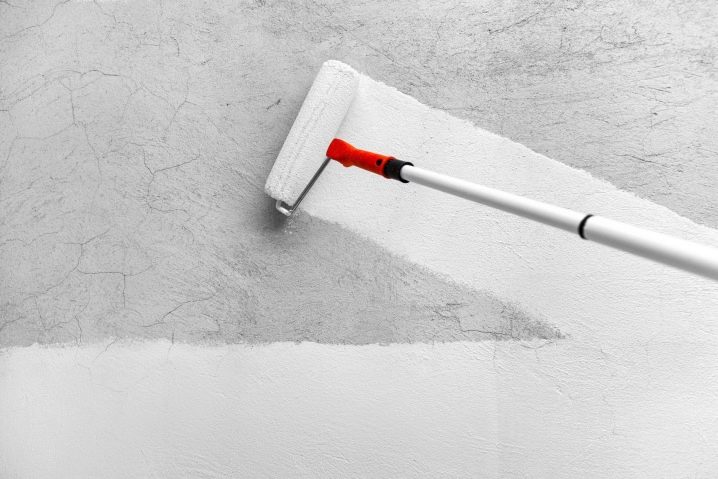
Considering the requirements necessary for this type of finish, it is clear that thick compositions are more suitable for this, since they:
- make the surface perfectly smooth;
- perfectly serve for color alignment;
- lie evenly, guaranteeing the same adhesion to the wallpaper everywhere.
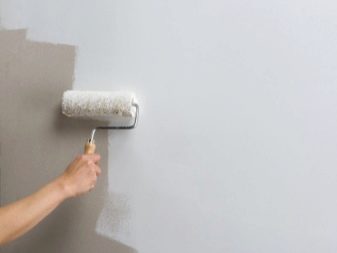
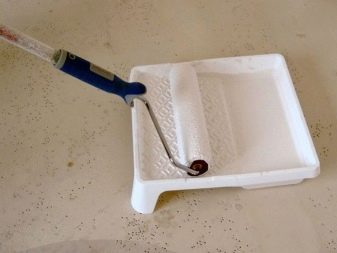
For the finishing of premises with wallpaper, the following types of primers are most often used:
- universal;
- alkyd;
- acrylic;
- latex.

The choice of primer can affect the result of the repair, so you should figure out which option is right for you.
Acrylic
It is based on styrene-alkylate dispersion and polymer binders. The material is fast drying. It suits any type of wallpaper and does not have an unpleasant smell.
Depending on the physical properties, acrylic primer is subdivided into the following types:
- adhesive (enhances the adhesion of the wallpaper to the base, suitable for smooth surfaces);
- with deep penetration effect (for porous and less durable surfaces);
- universal (suitable for any kind of surfaces, increases their moisture resistance, ideal for interior work);
- special (developed for different types of materials, has different properties and is selected depending on the goals of the consumer);
- impregnating (for leveling loose surfaces and smoothing out minor flaws).
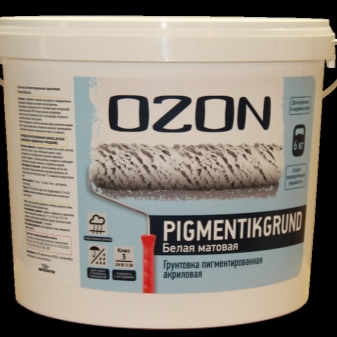
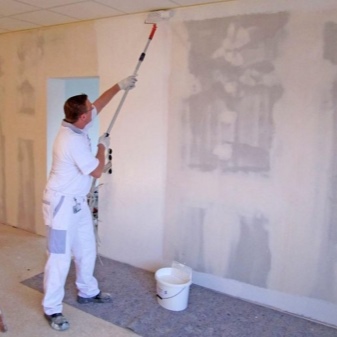
Distinctive properties of any acrylic primer:
- reduces glue consumption;
- protects the surface from moisture;
- excludes the appearance of mechanical damage;
- extends the lifespan of the canvas, "pushing back" repeated repairs;
- diluted with water without losing its qualities.
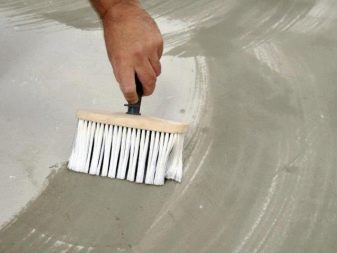
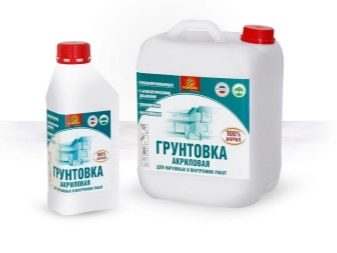
Alkyd
In terms of its properties, this primer is similar to paint. The white pigmented alkyd primer adheres professionally to both concrete and wood surfaces, clogging the top layer. Thanks to the formation of a protective film, the surface receives one hundred percent protection against moisture penetration into the building material.Due to the fact that such a primer does not have a deep penetration effect, its price is inferior to other primer mixtures.
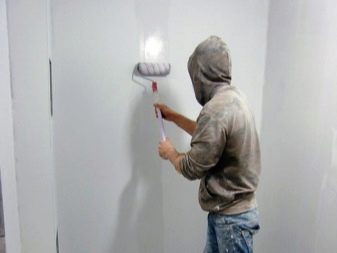
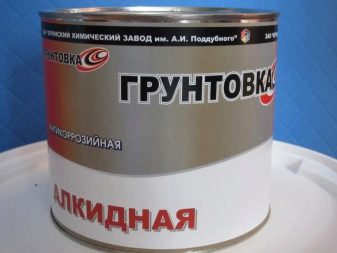
It should also be borne in mind that alkyd primers are not suitable for some types of smooth surfaces, as well as walls that have previously been plastered.
If possible, it is recommended to use a different type of primer that can protect the surface not only from moisture and drying out, but also from mechanical damage, creating a reliable adhesion to the finishing material.
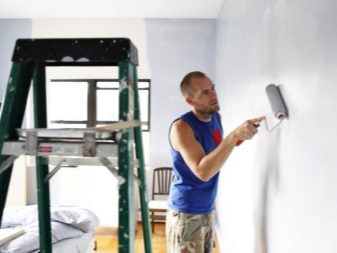
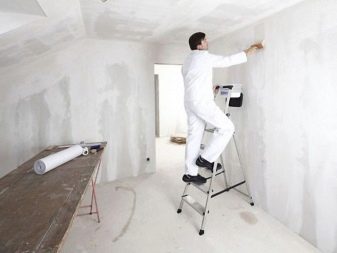
Latex
The latex primer contains natural ingredients. Latex is a natural substance that is obtained from rubber juice. It is characterized by the ability to increase and maintain the elasticity and resilience of materials, as well as their tensile-compression resistance, has hydrophobic properties (prevents moisture from entering). Due to the high cost of natural raw materials, prices for latex primer are quite high.

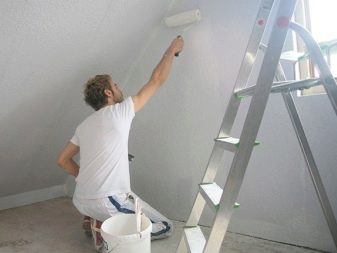
Perfectly protecting the base, latex primer is inferior to acrylic in terms of adhesion to the decorative layer. But if you need to strengthen loose and crumbly surfaces or sticking wallpaper in a room with high humidity, you should pay attention to this type of base.
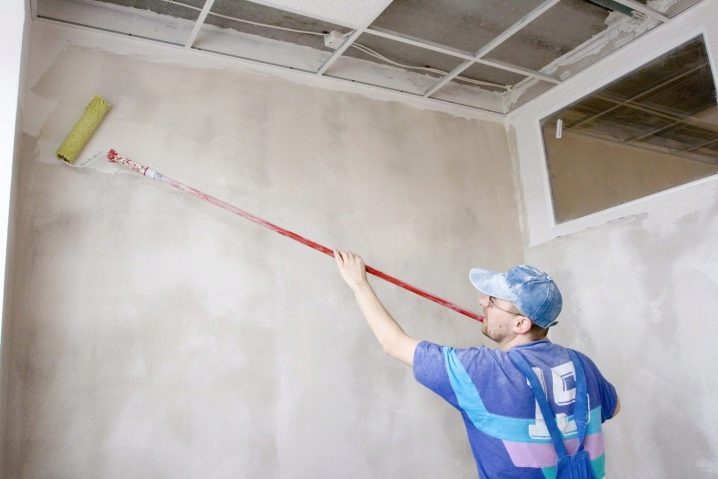
Universal
The name of this type speaks for itself. This primer is ideal for all types of surfaces - from smooth to loose and crumbling. A distinctive characteristic is its ability to preserve properties with decreasing and increasing temperatures. Even after five times the freeze-thaw process, the universal primer continues to fulfill its mission.
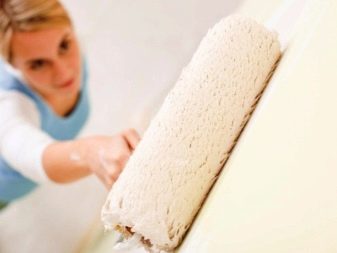
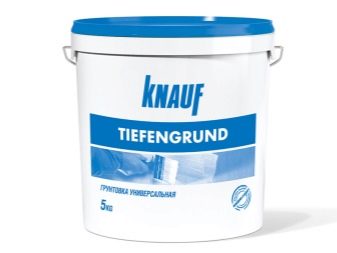
Universal primer is created using acrylic polymers and the addition of resin polymers to enhance the effect. It penetrates deeply into the structure of the wall, at the same time forming a protective film on the surface. In this way, it strengthens the base, protecting it from unwanted external factors, without reducing the adhesion ability. Most often, such a primer is applied in 2 stages. It fits perfectly on aerated and reinforced concrete, drywall and many other surfaces.
A distinctive feature of this primer is its low consumption.
Adhesive primer
Some people prefer to prime the walls before gluing the wallpaper with glue. For priming, either PVA glue diluted with water is chosen, or the surface is treated with casein (wallpaper) glue. This option attracts many by its relatively low price, ease of preparation, naturalness and environmental friendliness. Let's consider the features of each option.
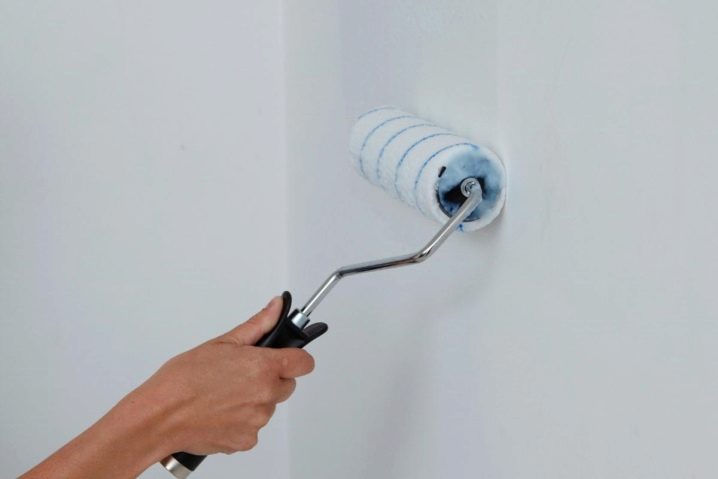
Priming with wallpaper glue
There are many pros and cons of this type of wall preparation for decoration. If you nevertheless decide to use wallpaper glue as a base before gluing, it is better to choose it in accordance with the type of wallpaper. To find out if such a composition is suitable for priming, you need to turn to the packaging. In the instructions for some types of glue, recommendations for dilution and proportions are prescribed specifically for using the glue as a primer. It is better not to use glue that is not suitable for these purposes, as this can lead to sad consequences and repeated repair.
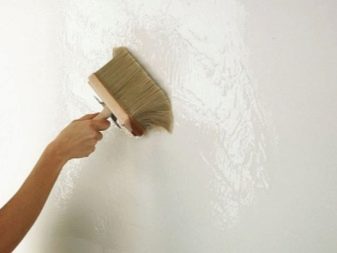
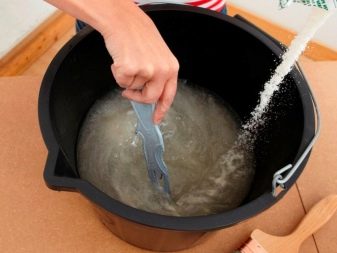
Some brands produce wallpaper glue with a color indicator that helps to apply the product evenly over the entire surface. In order to prepare a base mixture from glue, no special skills are required. In addition to being easy to dilute and apply, this method is also very economical.
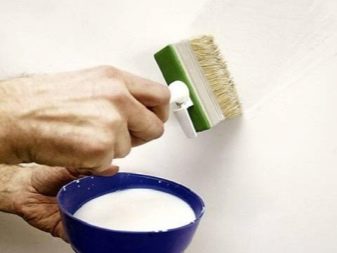
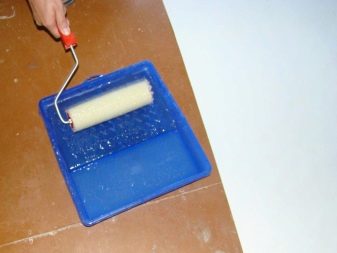
It is important to understand that wallpaper glue cannot hide visible flaws and make the surface perfectly flat and smooth. With high humidity in the room, it is worth choosing formulations with antiseptic additives. They do not promise complete protection against mold, but the likelihood of its appearance is significantly reduced.
Priming with PVA glue
PVA glue has been used as a primer since the times of the USSR.This universal adhesive, which stands for polyvinyl acetate, is used in everyday life, creativity and the construction industry. The glue is a thick white suspension that becomes transparent after complete drying.
There are many types of PVA glue, differing in properties and purpose (construction, carpentry, furniture). Both universal product variants and specialized ones are available. The composition of PVA glue contains mineral particles, due to which the adhesive properties increase. It is added to building concrete mixes and fillers to increase strength.
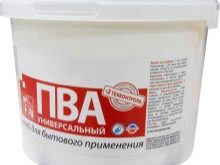

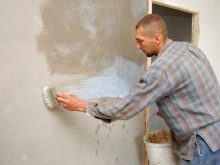
To prepare the primer mixture, PVA glue is diluted with water in a 1: 2 ratio. However, many experts do not recommend using glue as a primer in this form. First, over time, a film of cured glue risks peeling off along with the decorative coating, causing you a lot of trouble. Secondly, over time, the composition acquires a yellow color, which can lead to its transmission through the wallpaper. This can spoil the appearance of the finish.
Therefore, if we are not talking about quality, but about quick and budget repairs, this option can be considered. When using expensive materials and painstaking and anxious achievement of an excellent result, this option should be postponed and purchase professional specialized tools.

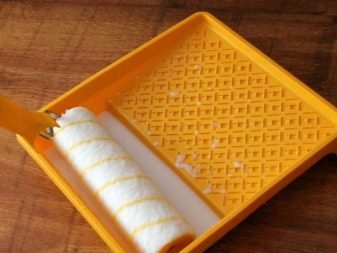
Priming for liquid wallpaper
Liquid wallpapers are very popular. In their structure, they are similar to plaster, but they contain cellulose fibers and silk particles, which makes them look so unusual. Finishing with such material is considered a "jewelry" work, so preparation for application must be done perfectly.

Acrylic bases with a deep penetration effect are excellent for the primer under liquid wallpaper. They qualitatively strengthen and fix the base, thanks to which the wallpaper will last for a long time.
How to choose
Let's summarize what criteria you should rely on when choosing a primer for wallpaper to get an excellent result.
Product characteristics:
- proportions;
- consumption;
- method of application;
- drying time;
- expiration date and date of manufacture.
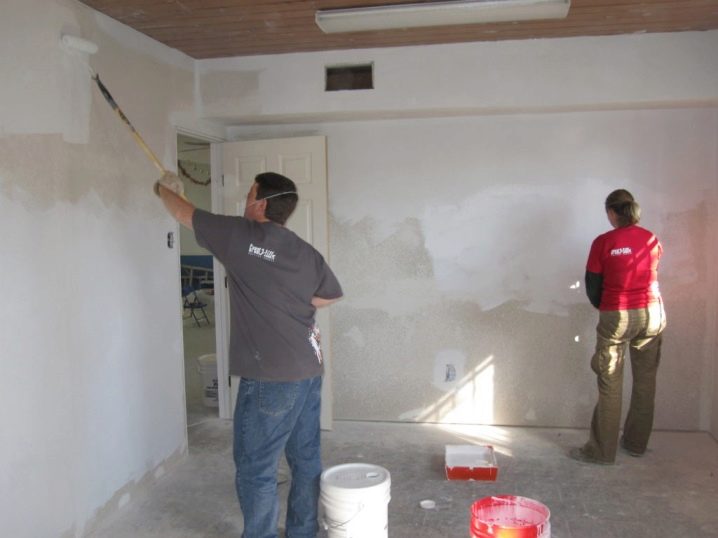
Depending on the purpose:
- antiseptic additives protect the surface from the appearance of mold and mildew;
- deep penetration primer fills microcracks and strengthens the surface by penetrating into the structure;
- a primer with a smoothing effect eliminates visible defects, making the surface perfectly flat;
- The pigmented white primer is ideal for light-colored wallpapers as it can hide stains underneath.

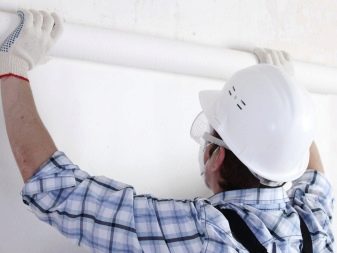
Sometimes, despite following all the recommendations, the result of the repair is unsatisfactory.
The main reasons in such cases, as practice shows, are the following points:
- the mixture was not selected correctly, taking into account the type of surface to be applied;
- the soil is not suitable for the humidity level of the room;
- the wallpaper is too thick.
Be attentive and patient, and you will definitely succeed.
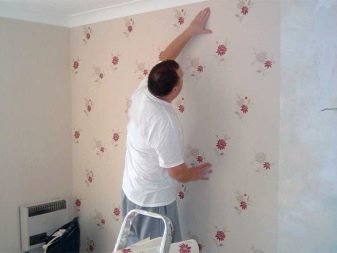
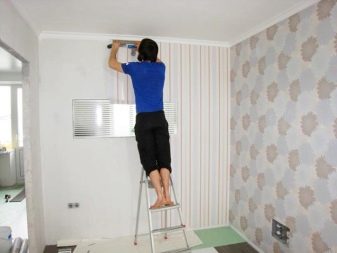
For information on the best way to prime the walls before gluing the wallpaper, see the video below.













The comment was sent successfully.